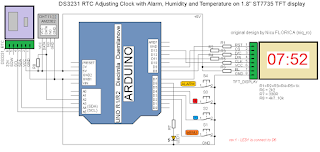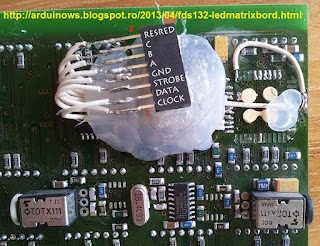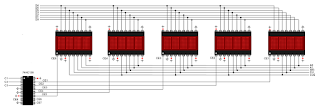For easy use as other Arduino boards, is ok to see this picture:
Last project with this board is a Web Switch Control.
For upload a sketch like in any Arduino board must use newish Arduino IDE software from https://www.arduino.cc/en/Main/Software to have this situation:
For this, must go to FILES -> PREFERENCES
and add http://arduino.esp8266.com/package_esp8266com_index.json adress
(see detailed data in article Placa NodeMcu v.0.9 programata in Arduino IDE).
After that in TOOLS -> BOARD->BOARDS MANAGER you will see
and than
Now, Arduino IDE software is ready for verify/compile and upload the sketch.
First, I tested a sketch found at ESP8266 Community Forum in post named GARAGE DOOR OPENER EXAMPLE V2 (SEE POST #2). This sketch is writted by JoseAngel
This sketch made a webserver using AJAX style (static page and just some datas is changes).
My sketch led_controlled_from_webpage.ino has some change line, but I use same password (1234), and my led is at GPIO5 (D15/SCL) and GND (I not put 220-470 ohms resistor limiter, but is more good to put). I use 8087 port, but you can change to 80.
I made WeMos board control a led using protected webpage using Ajax movie when you can how it use and control the led:
After I tested about one mounth, I see some problemes, when wi-fi router is disconnected and reconnect.. so, I study but I give a tip from a collaborator, Mircea Craciun, who indicate my another post from ESP8266 forum.
Now, my sketch led_controlled_from_webpage_auto.ino made autocreconnect in wi-fi network if apear some problemes.
I put an LED for wi-fi error at GPIO12 (D12/MISO) and GND.
At first start, after restart or if link between router and WeMos is broken, second led blink until link with wi-fi is ok. You can see in ESP8266 Switch control with autoreconnect to wi-fi network movie how WeMos D1 board is working.
At http://www.esp8266.com/wiki/doku.php?id=arduino-docs I found how I can use EEPROM memory from ESP8266EX microcontroller for store the state of led (ON or OFF) and number of good clicks (just for see how work the system).
Last sketch, led_controlled_from_webpage_auto_eeprom.ino, has this feature with stored data in EEPROM. You can see that in ESP8266 Switch control with autoreconnect to wi-fi network (2) movie
Bibliography:




























































